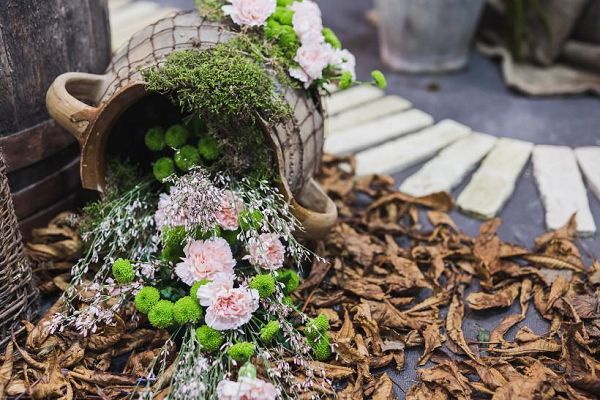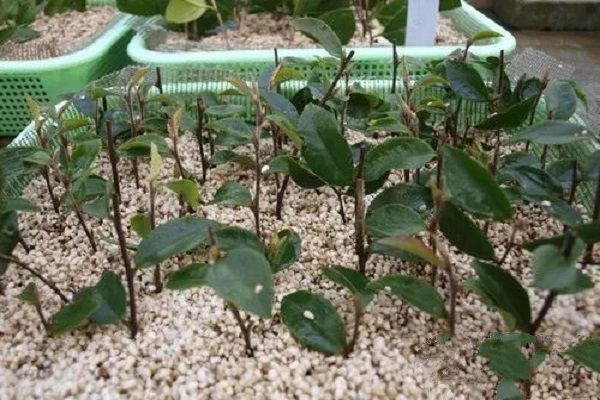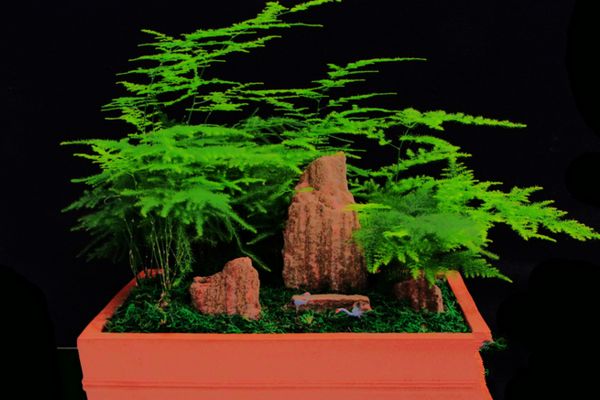The main points of watering flowers and plants

The reason why the leaves of flowers are green, the flowers are fresh and charming, and the plants are strong and straight, water is one of the main contributors. Flowers and trees can not grow without water, but too much water will do harm to flowers and trees. Therefore, according to the needs of flowers and trees, they should be watered reasonably.
First, how to judge whether flowers and trees are short of water
From the cultivated soil to judge whether there is a lack of water, gently tap the flowerpot with fingers or sticks, if the sound is relatively clear, it means that the basin soil is dry and needs watering; if the sound is low and dull, it means that the basin soil is wet and does not need watering. Observe the color of the basin soil surface with your eyes, if the color becomes lighter or grayish white, it means that the basin soil is dry and needs watering; if the color is dark, it means that the basin soil is wet and does not need watering. Gently insert your finger into the basin soil to check the soil, and when it feels dry or rough and hard, it means that the basin soil is dry and needs watering; if it feels wet, delicate and soft, it means that the basin soil is wet and does not need watering. Pinch the basin soil with your fingers, if the soil is not powdered, it means that the basin soil is dry and needs watering; if the soil is filled into flakes or aggregates, it means that the basin soil is wet and does not need watering. It is more accurate to use the above two or more methods to judge the results. Through many experiences, the weight of the flowerpot can also be used to determine whether there is a shortage of water.
Judging from the flowers and trees themselves, when the flowers and plants are short of water, the whole planting forest will appear lifeless, mainly manifested as terminal branches and leaves withering and sagging, even withered yellow leaves, and the leaves mean losing luster. If there is a lack of water during the flowering and fruiting stage, the flowers and fruits will wilt or even fall off.
Second, the principle of watering
Different flowers and plants have different sensitivity to water, some are resistant to moisture and waterlogging, and some are resistant to drought, especially potted flowers have stricter requirements for water than ground-grown flowers. Generally speaking, watering flowers and trees, especially potted flowers and trees, should grasp the principles of "dry and wet" and "dry and thoroughly watered". "see dry see wet" applies to azaleas, rose, gardenia and other flowers that like to be moist but not resistant to drought, it means that after watering once until the soil surface turns white, the surface soil should be watered for the second time, and when watering, it must be watered thoroughly until you see water seeping out from the drainage hole at the bottom of the basin. For flowers and trees that like dried plum, hydrangea, plum blossom, etc., they should pay attention to "dry and thoroughly water enough", which means that the basin soil should be fully dry, but when there is no crack between the pot soil and the pot soil or between the pot soil and the pot soil, it should be watered thoroughly at one time, and the drainage hole should also be seen until it comes out of the water. In addition, for some thick, succulent and drought-tolerant flowers and trees to grasp the "dry rather than wet" principle, absolutely not stagnant water. For waterlogging-resistant flowers and trees such as tortoise back bamboo, it is necessary to grasp the principle of "rather wet than dry". The basin soil should always be kept moist and cannot be dehydrated.
Third, pour the right water
People usually come into contact with many kinds of water, different water quality is different, the impact on flowers and plants is also different. It is better to water flowers and trees with soft water such as lake water, river water, pond water and so on. Most of the well water is hard water, which contains more calcium, magnesium and other inorganic salts, which is not conducive to the normal growth of flowers and trees and is not suitable for use. In the natural water, Rain Water and Xueshui are the most ideal, followed by pond water. When watering flowers with tap water, because they contain more chloride ions, which is not conducive to plant growth, they should be exposed in the air for 1 or 2 days and then be reused after the loss of chlorine. Never use stagnant water containing more germs, soapy water for laundry and oily dishwashing water to water flowers and trees.
Fourth, pour water to fix the root.
The first watering after planting is called rooting water. The fixed root water must be fully watered, because the first planted soil is not completely sunk, and there are many voids in the soil. Only after watering thoroughly, the soil and the root system can be fully combined. Generally, it is necessary to continuously irrigate twice after planting, dry after the first watering, and re-irrigate again after the water flows out of the basin bottom hole, so as to ensure the full absorption of the soil and close contact with the root system.
Watering at the right time
The water temperature is different in different seasons and different times, and the water temperature has a direct effect on the root physiological activities of flowers. If the difference between water temperature and soil temperature is more than 5 ℃, watering will cause a sudden change in soil temperature and damage the roots, thus affecting the absorption of water by the roots and resulting in physiological drought. Therefore, watering is better when the water temperature is close to the soil temperature, especially in winter and summer. In winter, it is best to store the water indoors for a period of time, or slightly add warm water to raise the water temperature to 15: 20 ℃, and then irrigate. In summer, you should avoid watering in the hot sun and high temperatures at noon. Generally speaking, around 10:00 in the morning and after 4 o'clock in the afternoon is the appropriate time to water the flowers.
VI. The way of watering
When watering, most flowers use spraying method, which can not only increase air humidity, but also wash foliar dust. But for flowers with fluffy leaves or flowers that are blooming, you can't spray water. Instead, you should sit the flowerpot in the basin and use the bottom hole to make the soil moist. If you forget to water the plant for many days, causing the plant to wilt early, do not rush to pour a lot of water, first move the potted flowers to a cool and ventilated place, spray the leaves with a spray can for 2-3 times, wait for the leaves to slow down, and then water a small amount. Wait for the root system to restore water absorption function, and then thoroughly watered.
Reasonable watering according to different growth periods
1. Seedling stage
Pot soil is straight to dry, as the saying goes, "dry roots, wet leaves", dry soil is easy to grow roots and strong seedlings, watering too much will cause seedlings to grow too much.
two。 Stem and leaf growth period
Adequate watering can lead to luxuriant branches and leaves, otherwise the plant grows slowly, but it should not be watered blindly and lead to stagnant water and rot roots in the basin soil. The general principle of watering is that the basin soil is dry and wet, dry and wet alternately, in order to keep the topsoil moist. By dry here, it does not mean that the basin soil is completely dry and thoroughly watered until the water is seen to flow out of the bottom hole. Because the soil is thoroughly dry, cracks will occur between the basin and the soil, and a large amount of water will be lost along the cracks during watering, which obviously cannot be poured through. In this case, the soil should be loosened before watering or the water should be fed directly by soaking basin method.
3. Mature peanut for a long time
During the transformation from vegetative growth to flower bud differentiation, if too much water or more nitrogen fertilizer is applied, the formed flower buds will also become leaf buds, so the method of deducting water (controlling watering) can be used to restrain the excessive growth of branches and leaves and promote the formation of flower buds. For example, triangulated plum, plum blossom, green peach and magnolia can effectively increase the flowering rate by controlling water for 2 or 3 times from June to July and then watering the branches and leaves wilting.
4. Flowering and fruiting stage
Once flowers enter the stage of budding, flowering and fruiting, they consume the most water, and there can be no shortage of water, let alone wilting of branches and leaves, otherwise the flowering period becomes shorter and flowering is bad. But not too much, especially not stagnant water, long-term stagnant water will lead to falling flowers and fruits.
Watering according to the habits and growth of flowers
Some flowers that are afraid of heat (such as cyclamen, hanging golden bell, etc.) and flowers that like shade and dampness (such as rhododendron, orchid, camellia, etc.) need to often spray water on the leaf surface and the environment around the plant, so that the air also maintains a considerable humidity, which is very beneficial to its growth and development. Tropical Orchidaceae, Araceae, pineapple flowers and ferns also need to spray water frequently. Some flowers are very sensitive to water, such as paulownia, lotus flower, etc., their leaves have thick hairs on the surface, which are not easy to evaporate after falling on water, and are easy to cause leaf decay. In short, wet flowers can be watered more; drought-tolerant flowers should be watered less; flowers with large and soft leaves should be watered more; flowers with small waxy leaves should be watered less; herbaceous flowers should be watered more; woody flowers should be watered less; seedlings and delicate flowers and cuttings that have not yet taken root in the new pot should be sprayed with more water.
- Prev

How to improve the survival rate of cutting when cutting flowers? These four points are the key.
How to improve the survival rate of cutting when cutting flowers? These four points are the key.
- Next

How to choose indoor flowers? Selection principles and Application forms of Indoor Flowers
How to choose indoor flowers? Selection principles and Application forms of Indoor Flowers
Related
- What if the leaves of potted flowers turn yellow?
- Florescence Control of several Flowers
- Anti-freezing technology and post-freezing nursing technology of flowers
- What is the classification of flowers? What are the common methods of flower classification?
- Prevention and control of alkali and acid damage of flowers in courtyard
- Technology of Anti-freezing and restoring growth of Flower seedlings in greenhouse and greenhouse
- How does flower fertilization not hurt the root? Fertilization technology of flowers
- Key points of disinfection in flower greenhouse
- Several pesticides that are banned or used cautiously in flowers
- How to fertilize the flowers that watch the leaves?

